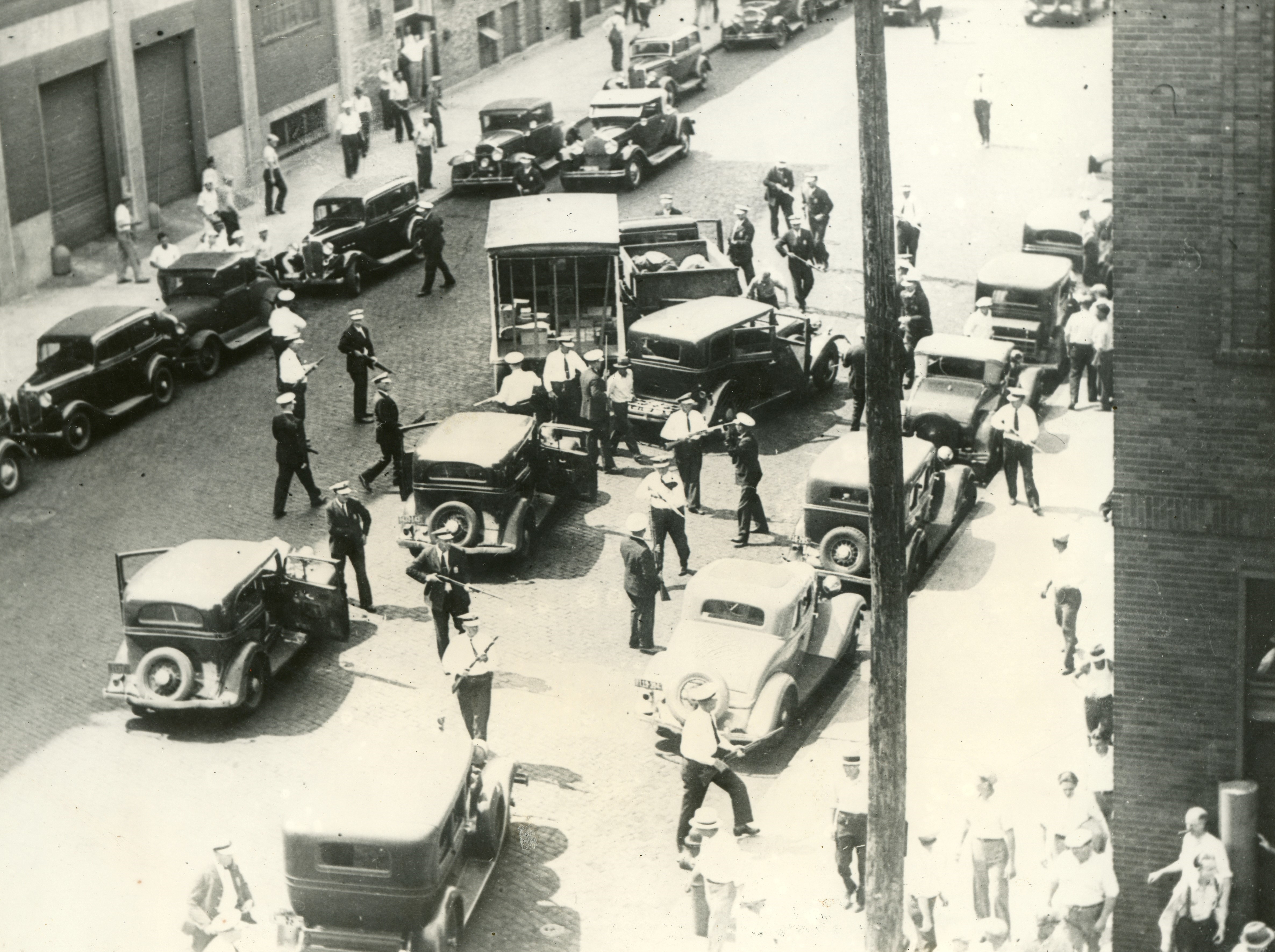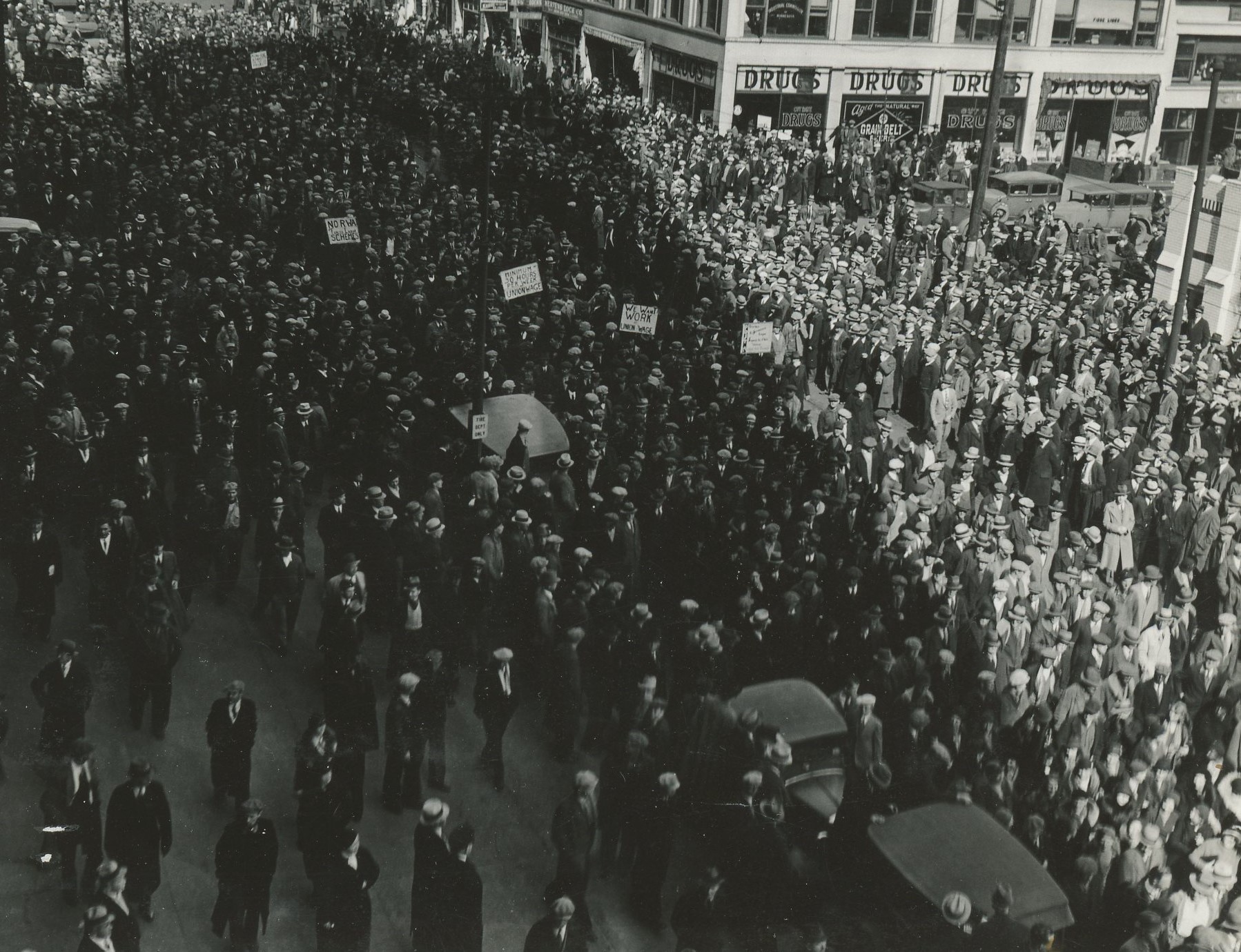August 6, 2018
In 1934, the streets of Minneapolis were a battleground. Teamsters had declared a city-wide strike to end discrimination against union workers, and their cars of strikers chased heavily-guarded trucks to keep them from crossing picket lines. Roving battles were waged between convoys of police with riot guns and trucks of strikers. Crowds of club-wielding picketers and strikebreakers clashed in the market center over the unloading of goods onto non-union trucks. The three-month strike would be one of the deadliest in the state’s history.

Standing between the two sides of this violent struggle was Governor Floyd B. Olson. A former prosecutor, Olson had clashed in the past with the anti-union organization the Citizens’ Alliance that had formed the backbone of strikebreaking in Minneapolis since the turn of the century. These efforts, along with prosecution of corrupt businessmen and the Ku Klux Klan had won him the support of working-class Minnesotans, who would elect him governor in 1930 — the first governor elected on a Farmer-Labor ticket. As the strike began in May of 1934, he would be torn between his ties to the workers who supported his candidacy and his need as governor to keep the peace and maintain order in the city.
Olson carried this personalized portfolio with him that summer as he worked tirelessly to facilitate negotiations between unions and employers. After the first major episode of violence just days into the strike, when twenty thousand strikers and onlookers crowded the market district and special deputies were driven back from their attempts to unload non-union trucks, Olson secured a short-term truce between strike organizers and business owners, and days later a broader settlement between the two sides.
Olson’s settlement unraveled by July, and the threat of more violence hung over Minneapolis. On July 20th it came to a head as a heavily-armed police escort moved trucks labeled “hospital supplies” to deliveries around the city. The trucks were met by cars of unarmed strikers that attempted to block their deliveries. Police, armed with shotguns, responded by firing upon the cars and strikers, injuring more than sixty and killing two. The governor’s worst fears had come true.
“Bloody Friday,” as the event became known, threatened to tear the city apart as the organizations of the wealthy rallied behind the police and the working class renewed efforts to support the strike. One-hundred thousand lined the route of the funeral procession for the slain union activist Henry Ness. Unions rejected new settlement offers. Employers continued to move trucks despite union blockades. Olson was forced to act.

The governor declared martial law and raided the headquarters of both unions, arresting organizers and members of the Citizens’ Alliance.
This time, Olson’s decisive action successfully brought an end to the violence and forced the two sides to a lasting settlement. With the support of President Roosevelt and pressure from the federal Reconstruction Finance Agency, negotiations succeeded. Employers conceded to workers’ demands of union recognition, non-discrimination, and seniority in hiring and firing. The back of the anti-union Citizens’ Alliance in Minneapolis was broken and unions gained a foothold in the once fiercely anti-union city.
Olson went on to win a third term as governor in November on the back of his success and then ran for Senate in 1936 but he died of stomach cancer in August, just three months before the election. Although his efforts were cut short, Olson is remembered as a fierce advocate of Minnesota’s working class. And eventually this portfolio made its way to Hennepin History Museum, preserved for all these years as a physical connection to the summer of 1934 and a reminder of Olson’s role as an intermediary.
Author Bio
Noah Barnaby is a Research Intern at Hennepin History Museum. He has a bachelor’s degree in History and Philosophy from the University of Minnesota, and focuses on Social, Economic, and Labor History.
Resources
See also:
An interview with strike organizer Vincent Raymond Dunne
Bryan D. Palmer. Revolutionary Teamsters: The Minneapolis Truckers’ Strikes of 1934. Haymarket Books, 2014.
Charles Walker. American City: A Rank-and-File History of Minneapolis. University of Minnesota Press, 2005.
Dennis Harrington. Floyd B. Olson and the Teamster Strikes of 1934. 1977.
